Memorandum of Agreement Samples
-

Air Force Memorandum of Agreement
download now -
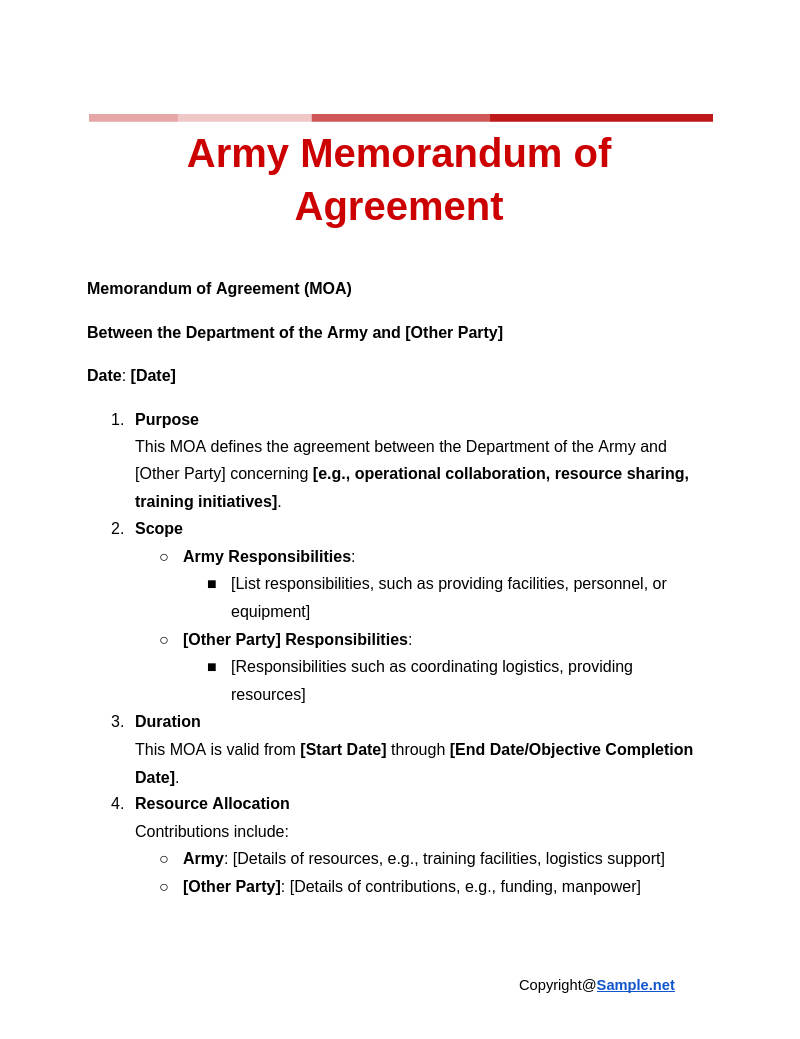
Army Memorandum of Agreement
download now -
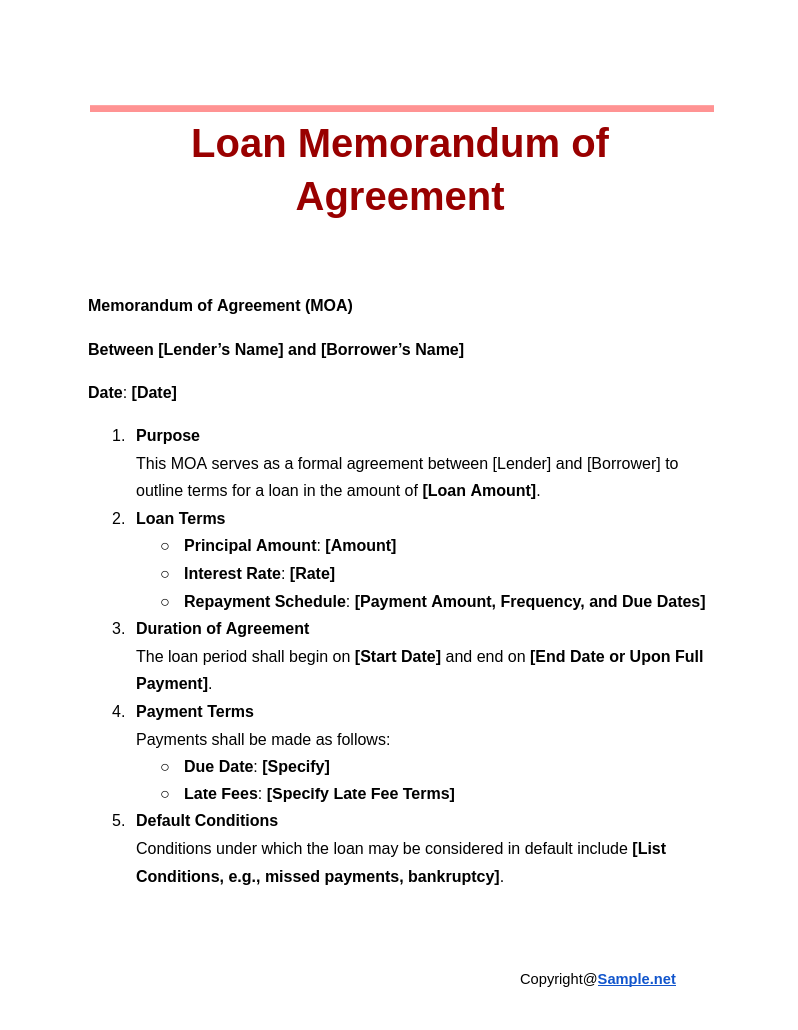
Loan Memorandum of Agreement
download now -
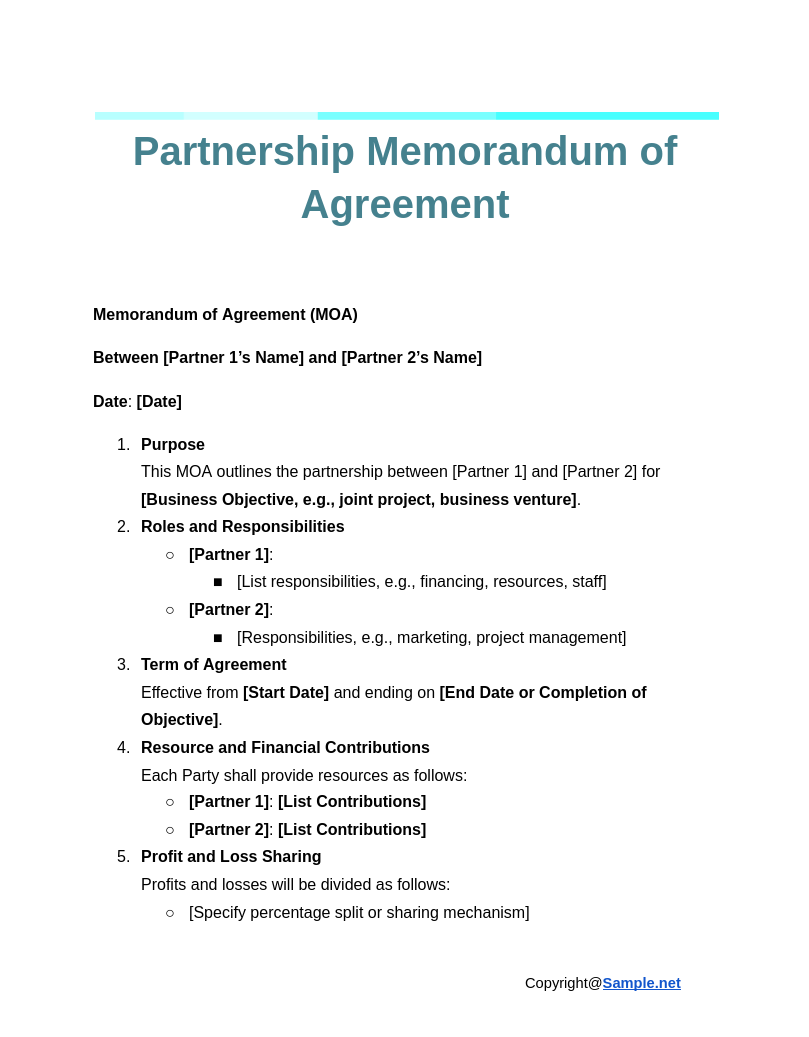
Partnership Memorandum of Agreement
download now -

Memorandum of Agreement Template
download now -
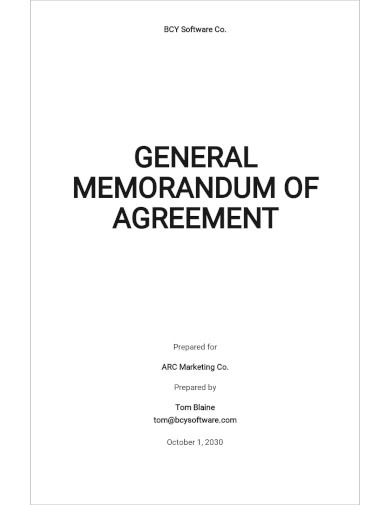
Free General Memorandum of Agreement Template
download now -
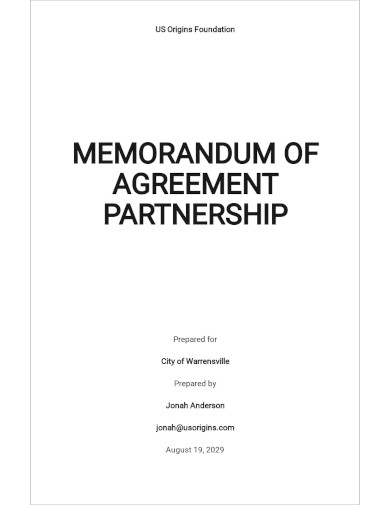
Memorandum Of Agreement Partnership Template
download now -
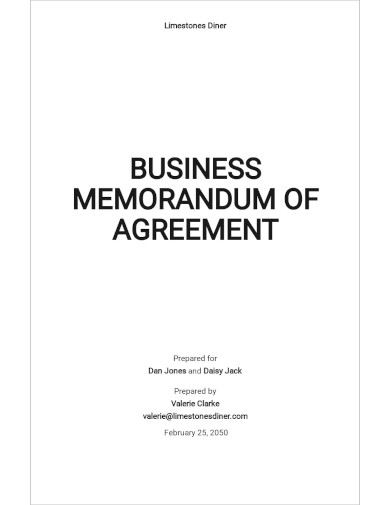
Business Memorandum of Agreement Template
download now -
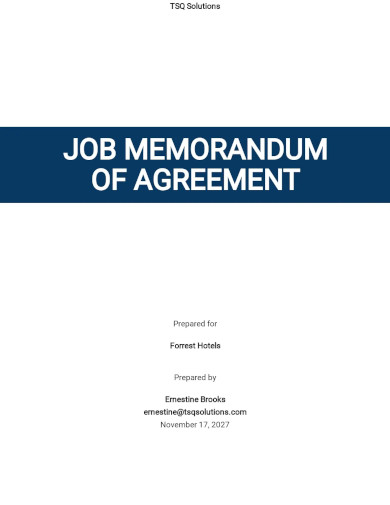
Job Memorandum Of Agreement Template
download now -
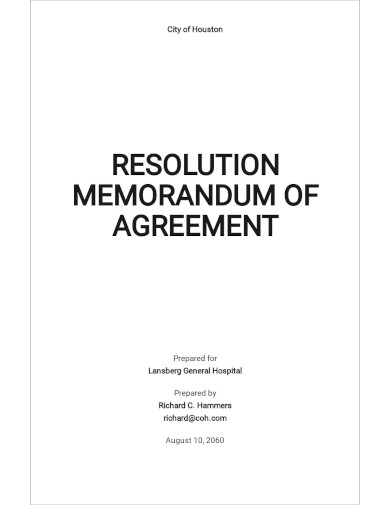
Resolution Memorandum of Agreement Template
download now -
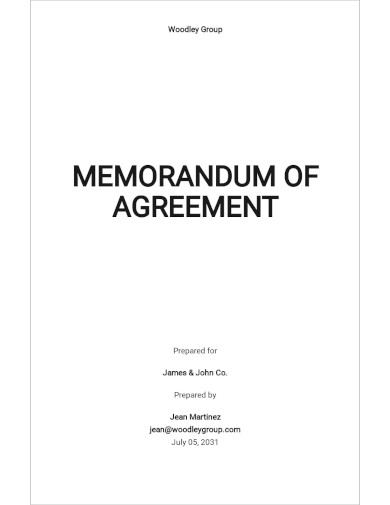
Draft Memorandum Of Agreement Template
download now -
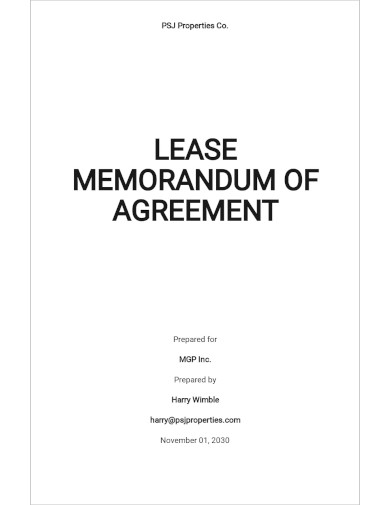
Lease Memorandum of Agreement Template
download now -
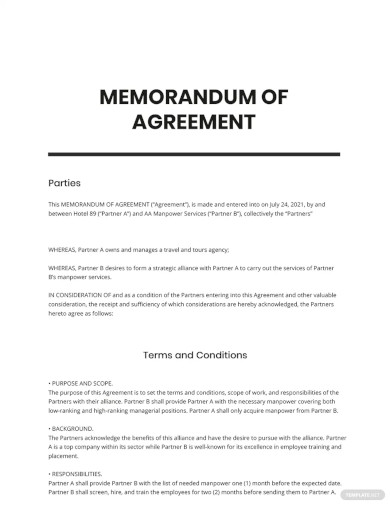
Sample Memorandum of Agreement Template
download now -

Free Basic Memorandum of Agreement Template
download now -
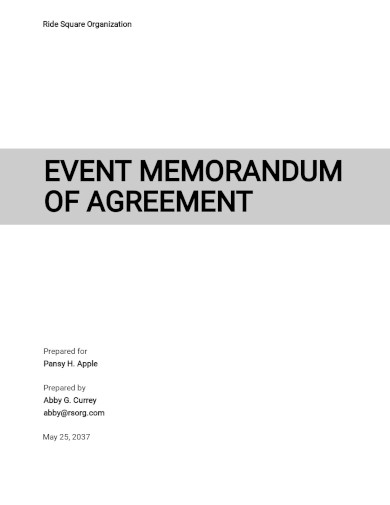
Free Event Memorandum of Agreement Template
download now -

Real Estate Memorandum of Agreement Template
download now -
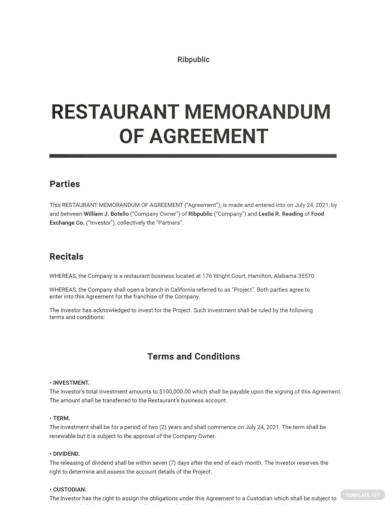
Free Restaurant Memorandum of Agreement Template
download now -
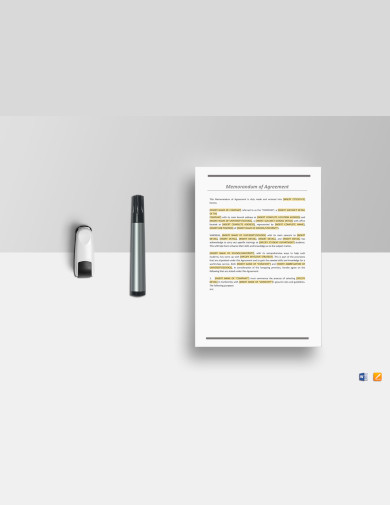
Formal Memorandum of Agreement Template
download now -

Editable Memorandum of Agreement Template
download now -
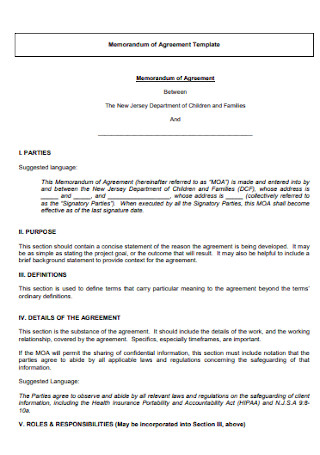
Sample Real Estate Memorandum Agreement
download now -
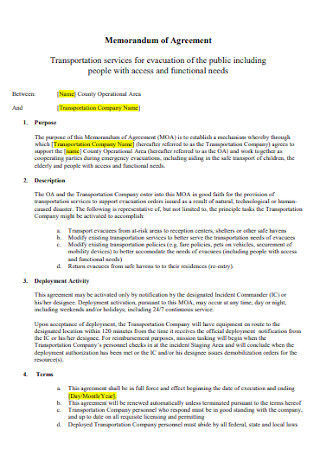
Transportation Payment Memorandum of Agreement
download now -
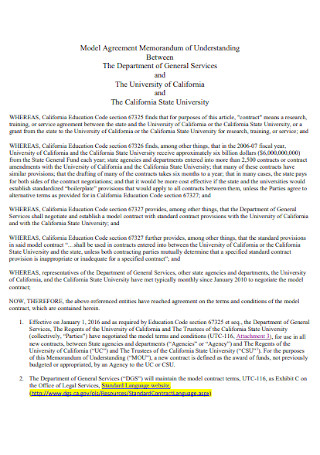
Model Contract Memorandum Agreement
download now -
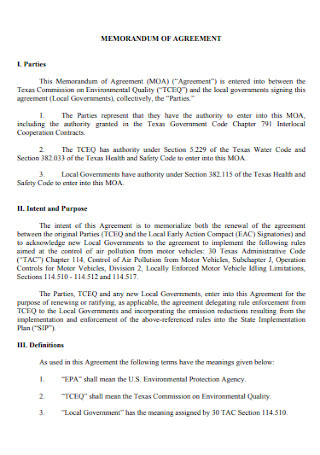
Simple Business Memorandum Agreement
download now -
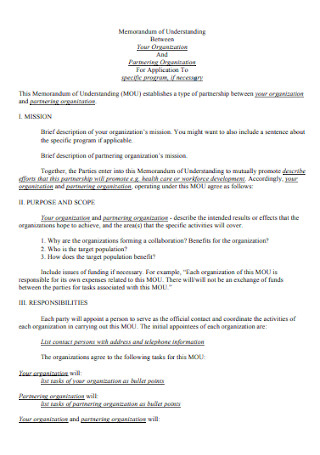
Property Memorandum of Understanding Agreement
download now -
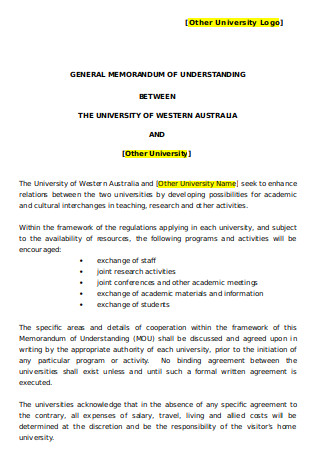
General Employee Memorandum of Agreement
download now -
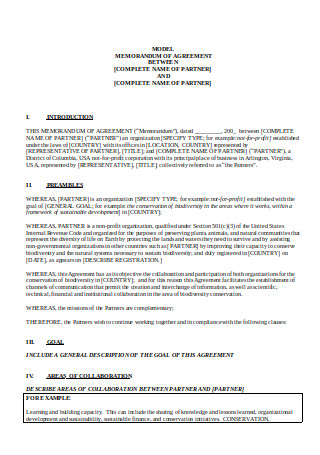
Partnership Memorandum Letter of Agreement
download now -
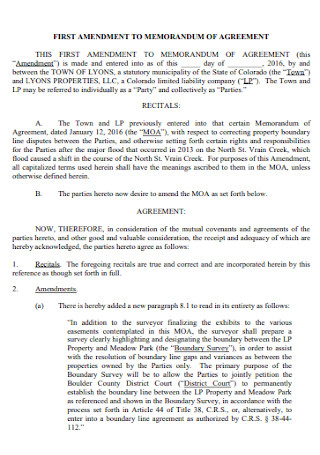
First Event Amendment to Memorandum of Agreement
download now -
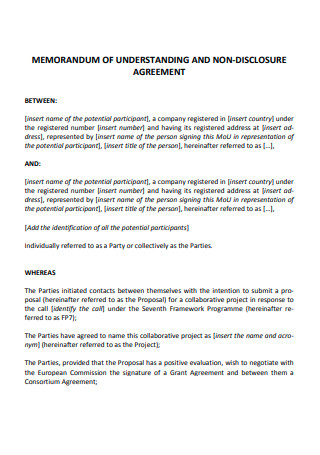
Memorandum Non Commission Disclosure Agreement
download now -
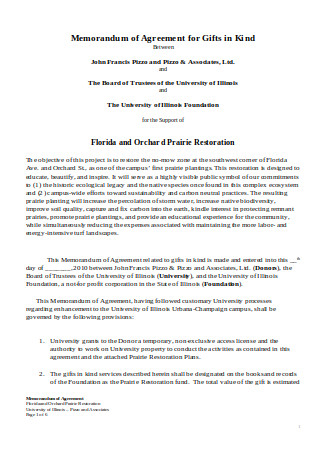
Service Memorandum of Agreement for Gifts
download now -
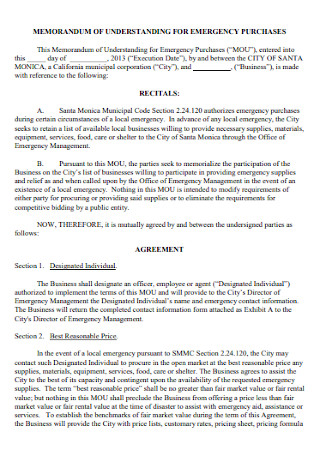
Memorandum Supplier Agreement for Emergency Purchases
download now -
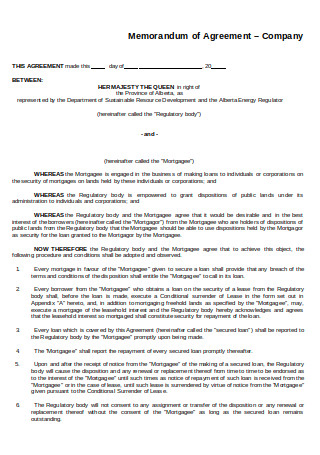
Company Agent Memorandum of Agreement
download now -
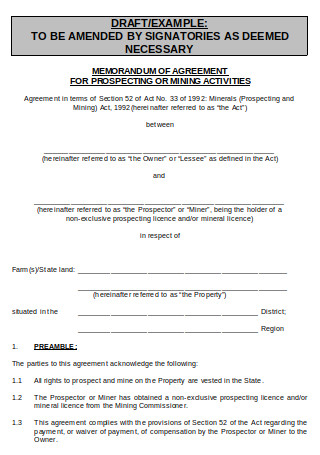
Memorandum Lease of Agreement for Prospecting Activities
download now -
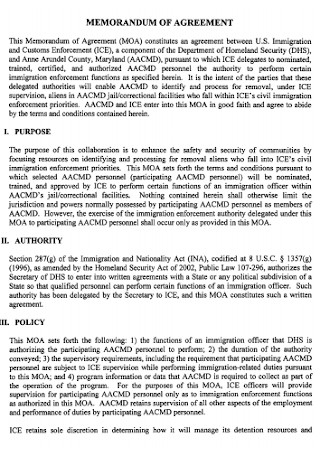
Basic Sponsorship Memorandum Agreement
download now -
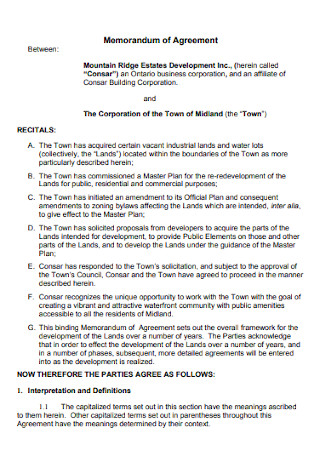
Individual Estates Memorandum of Agreement
download now -

Parties of Notary Memorandum Agreement
download now -
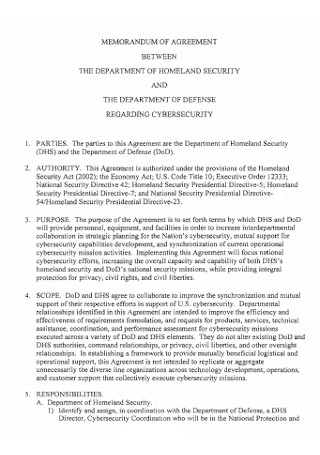
Homeland Joint Venture Memorandum Agreement
download now -
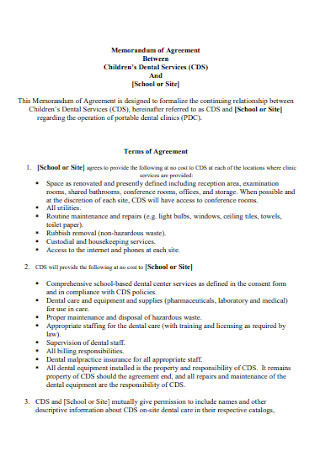
Childrens Termination Memorandum of Agreement
download now -
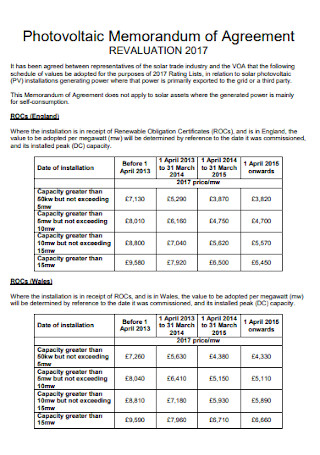
Photovoltaic Organization Memorandum of Agreement
download now -
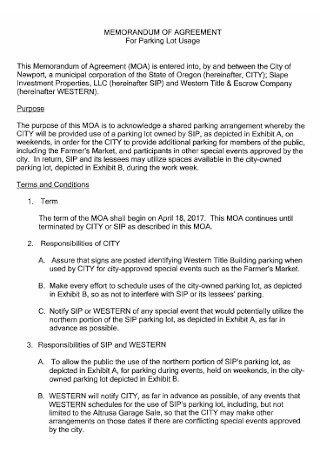
Debt Memorandum Agreement for Parking
download now -
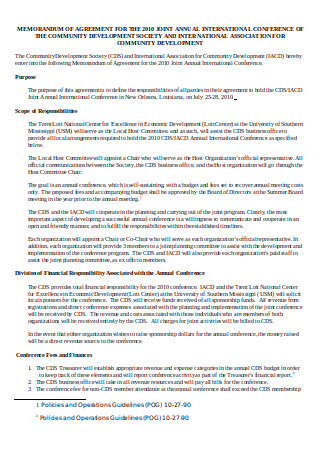
Work Immersion Partnership Memorandum of Agreement
download now -
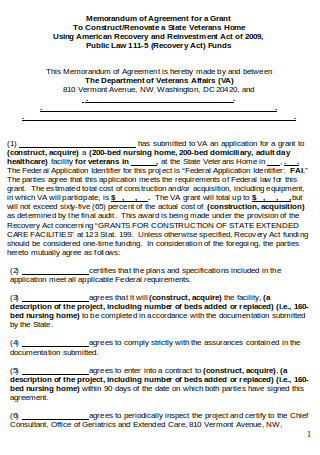
Rental Memorandum of Agreement for Grant
download now -
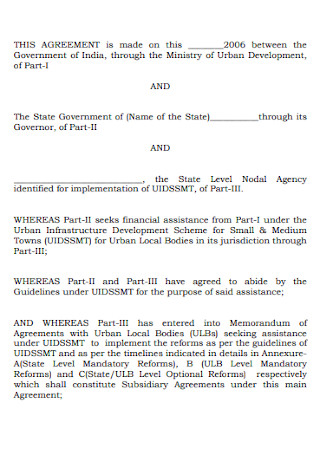
Standard Memorandum Agreement
download now -
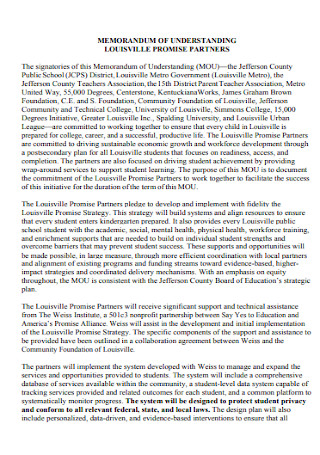
Memorandum Partners Agreement
download now -
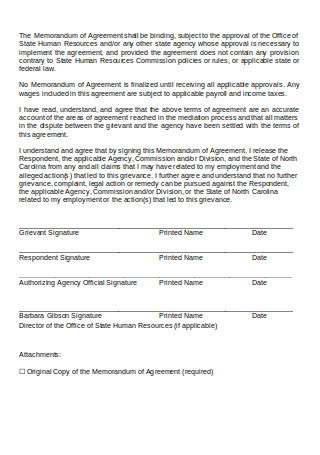
Addendum Memorandum of Agreement Sample
download now -
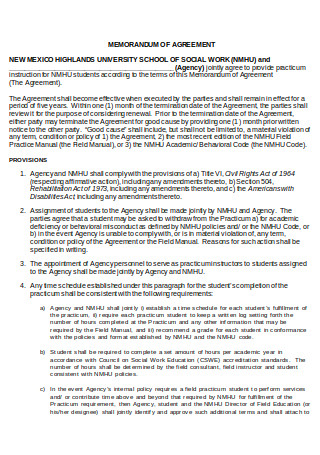
School Memorandum of Agreement
download now -
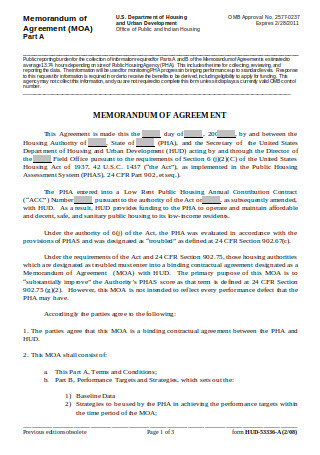
Memorandum of Agreement Form
download now -
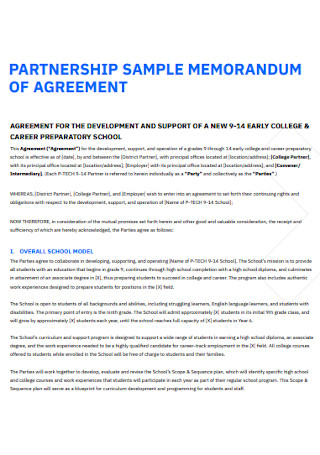
Sample Partnership Memorandum Agreement
download now -
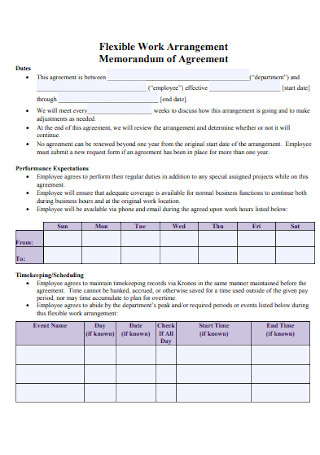
Flexible Work Memorandum of Agreement
download now -
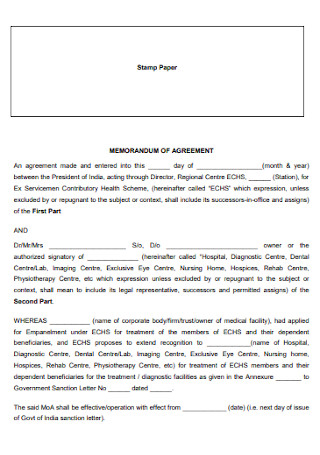
Memorandum Stamp Paper Agreement
download now
FREE Memorandum of Agreement s to Download
Memorandum of Agreement Format
Memorandum of Agreement Samples
What is a Memorandum of Agreement?
Important Elements of Memorandum of Agreement
How to Make an Excellent Memorandum of Agreement
FAQs
What is the difference between MOA and MOU?
What is the difference between MOA and AOA?
Does the MOA need to be notarized?
How long does an MOA last?
How does an MOA foster accountability among parties?
How often should an MOA be reviewed and updated?
What should I include in the terms and conditions of an MOA?
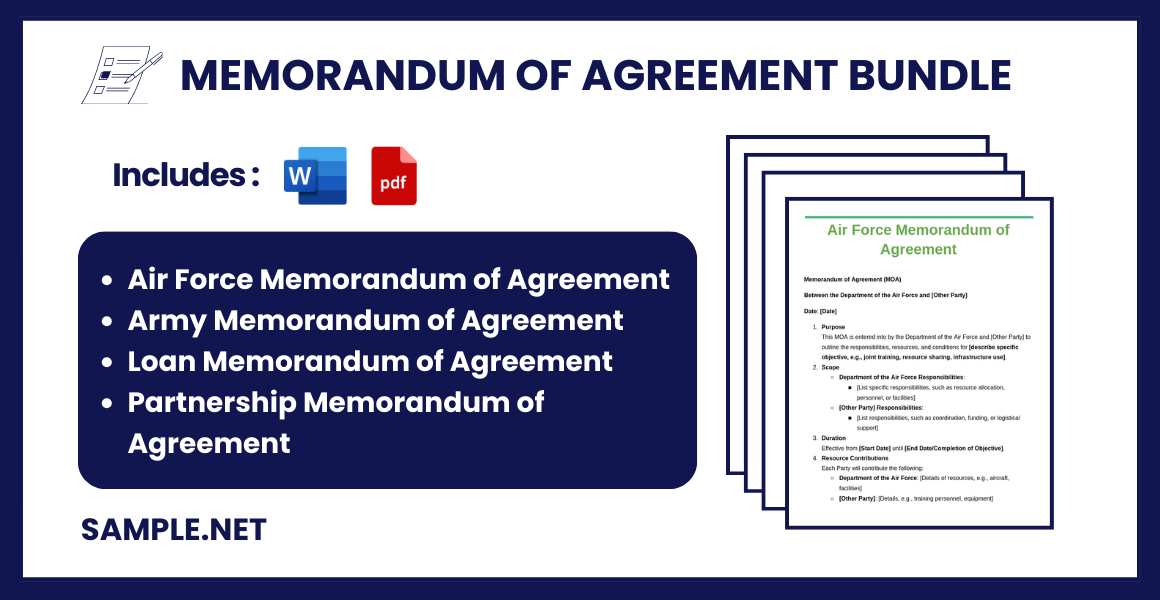
Download Memorandum of Agreement Bundle
Memorandum of Agreement Format
This Memorandum of Agreement (MOA) is made and entered into on this [Date], by and between:
- Party A: [Name of Party A], with an address at [Address of Party A].
- Party B: [Name of Party B], with an address at [Address of Party B].
Hereinafter referred to collectively as the “Parties” and individually as a “Party.”
1. Purpose
The purpose of this MOA is to outline the terms, responsibilities, and expectations for both Parties concerning [Brief Description of the Agreement’s Objective, e.g., project collaboration, resource sharing, etc.].
2. Scope of Work
Each Party agrees to fulfill the following responsibilities within the scope of this agreement:
- Party A Responsibilities:
- [Responsibility 1]
- [Responsibility 2]
- Party B Responsibilities:
- [Responsibility 1]
- [Responsibility 2]
3. Terms and Duration
This MOA shall commence on [Start Date] and shall remain in effect until [End Date/Completion Date], unless terminated earlier per the terms specified herein.
4. Funding and Resource Allocation
Each Party agrees to contribute the following resources or funding as follows:
- Party A Contributions: [Details of financial or resource contributions]
- Party B Contributions: [Details of financial or resource contributions]
5. Confidentiality
Both Parties agree to keep all proprietary information confidential and agree not to disclose any such information to any third party, except as required by law or with the express written consent of the other Party.
6. Intellectual Property Rights
Any intellectual property developed or derived during the course of this MOA will be handled as follows:
- Ownership of work, ideas, or products shall be agreed upon separately by the Parties or remain with the original Party unless expressly transferred.
7. Amendments and Modifications
Any modifications to this MOA must be made in writing and signed by both Parties to be effective.
8. Termination
Either Party may terminate this MOA by providing [Number] days’ written notice to the other Party. Upon termination, each Party shall fulfill its obligations up to the date of termination.
9. Dispute Resolution
Any disputes arising out of or in connection with this MOA shall be resolved amicably through negotiation. If unresolved, the dispute may be submitted to mediation or arbitration.
10. Miscellaneous Provisions
- Governing Law: This MOA shall be governed by the laws of [State/Country].
- Entire Agreement: This MOA represents the entire agreement between the Parties and supersedes all prior agreements, written or oral.
- Severability: If any provision of this MOA is found to be unenforceable, the remaining provisions shall remain in effect.
Signatures
By signing below, each Party agrees to the terms of this MOA.
For Party A
Signature: ________________________
Name: _____________________________
Title: ____________________________
Date: _____________________________
For Party B
Signature: ________________________
Name: _____________________________
Title: ____________________________
Date: _____________________________
What is a Memorandum of Agreement?
A Memorandum of Agreement is a document used to clarify the responsibilities, roles, and objectives of all parties involved in a partnership or collaboration. It formalizes the mutual understanding without necessarily establishing a legally binding commitment, often serving as a precursor to a contract. The MOA outlines key details, such as deliverables, timelines, and procedures, providing a clear roadmap for cooperative efforts. You can also see more on Mutual Agreement.
Important Elements of Memorandum of Agreement
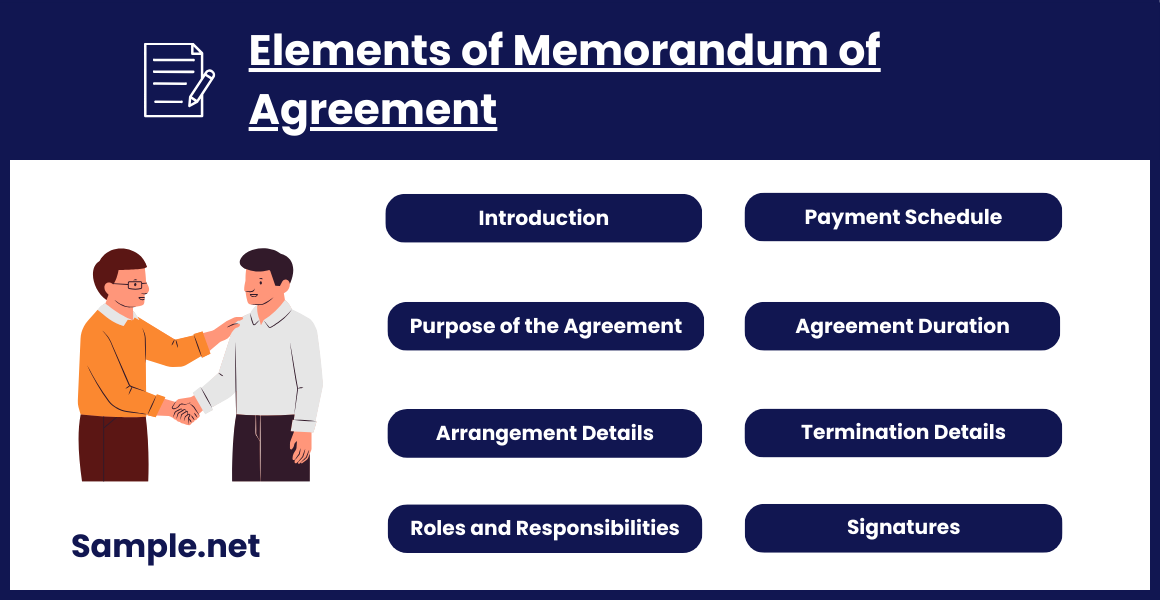
What is inside the memorandum of agreement? Take note that there are common elements to recognize what makes up an MOA. Albeit the terms and arrangements of the components may differ from various agreements, just know that common denominators can be distinguished. You can also see more on Individual Agreement. And without further ado, these are the MOA’s important elements:
How to Make an Excellent Memorandum of Agreement

Since you already know that the MOA is widely used for defining cooperative relationships among parties, do you also know how to make that memorandum? You might need it one way or another, especially when a study reported how 50% of managers and employees usually invest time in collaborative activities and projects. If that many would use an MOA, then it is important and helpful at the same time. You can also see more on Written Agreements. And to produce an excellent memorandum of agreement, simply follow these steps:
Step 1: Identify the Elements of Your MOA
Can you still recall the MOA elements discussed above? Start by writing down the elements based on your proposed agreement in a draft. So, you eventually write your agreement’s purpose, name of parties, roles or responsibilities, and so forth. Be sure it observes the right sequence, though, wherein it starts with the introduction down to the signatures. Most importantly, don’t mix up one element to another. Maybe you wrote the details for the agreement duration under the payment schedule section. And that is already wrong. You can also see more on Binding Contract.
Step 2: Insert the Elements in a Template
Once you finish your draft, transfer the elements to the MOA template of choice. Remember that you have a variety of options to download here. Give time to explore and edit the format of templates for grabs first. However, don’t just simply copy and paste everything from the draft to your template. Pick only the essential details, and don’t include some unnecessary statements to the final template. If drafts have mistakes, then your final document must be corrected already.
Step 3: Observe a Positive and Professional Tone
Bear in mind that a memorandum of agreement is still an official document. So writing informal words or having incorrect spelling and poor grammar will not be tolerated. Be professional, like in writing a business letter. However, it doesn’t mean you have to be too technical with your terms and sentences because the other parties might no longer understand it. A professional yet understandable tone is what matters. And speaking of tone, review if MOA has a positive language. Don’t make documents where readers would feel threatened, afraid, or any other negative reaction from how you wrote those.
Step 4: Strive for Balance
Observe a sense of balance. No, it doesn’t mean that if one party has ten responsibilities, then the other should have that same number of responsibilities as well. Balance by writing, “both parties agree.” In other words, the agreement should not be one-sided. Mutual understanding is crucial to have each party sign the form anyway. More so, balance by making the expectations feasible. Maybe the terms are no longer realistic and are hard to fulfill, especially if it goes against the scope of authority.
Step 5: Be Specific
Indeed, writing a detailed letter is good. But not to the point where it is already wordy. Omit unnecessary words and be more direct. In fact, keeping it simple is acceptable, so long as the sentences are concise. Aim to answer the significant who, what, when, where, why, and how questions about your agreement. And the key is to reread all statements written in the document and specify certain words if you find wordy sentences.
Step 6: Evaluate and Polish the Form
Never skip the evaluation process. The last thing you would want to happen is having the MOA filled with errors. And when parties sign on agreements with mistakes, problems eventually rise. In addition, conduct reality checks if your statements are somehow factual or credible enough. Maybe you added statistics in explaining, yet they have incorrect figures. The same goes for checking how realistic your scope of work is. And if you feel like you have everything polished already, have the MOA signed.
A Memorandum of Agreement provides a structured framework for partnerships, helping align expectations and ensuring each party understands their commitments. With its clear guidelines, an MOA enhances collaboration and reduces potential conflicts, making it an invaluable tool for establishing productive and transparent working relationships. You can also see more on Corporate Agreement.
FAQs
What is the difference between MOA and MOU?
The memorandum of understanding (MOU) is used particularly for simple agreements that aren’t legally binding. It can work where parties only have a handshake. Meanwhile, the MOA is more formal as it is a conditional agreement wherein parties anticipate for monetary exchange, services, and more. You can also see more on Amendment Agreement.
What is the difference between MOA and AOA?
Although both documents are useful, they have different specific functions. The MOA is the main document of a company that outlines the essential details about their business. On the other hand, the articles of association (AOA) focuses more on the rules and stipulations made by the company.
Does the MOA need to be notarized?
It is safe to have the agreement notarized, but it doesn’t mean that notarizing it is required. Remember that the memorandum of an agreement already plans on agreeing. It is presumed to become a contract afterward. And contracts need not be notarized unless you want to. You can also see more on Research Agreement.
How long does an MOA last?
The duration depends on the terms specified in the MOA. Some are short-term, while others last as long as the collaboration requires.
How does an MOA foster accountability among parties?
By outlining specific responsibilities and deadlines, an MOA encourages all parties to adhere to their commitments. This structured approach helps maintain focus and follow-through on agreed objectives. You can also see more on Occupancy Agreement.
How often should an MOA be reviewed and updated?
The review frequency depends on the project. For longer projects, an annual or bi-annual review may be necessary, while short-term MOAs may not require frequent updates. Regular reviews ensure alignment with current goals.
What should I include in the terms and conditions of an MOA?
Terms should cover duration, roles, reporting requirements, deadlines, and any specific conditions that could impact the agreement. Clarity in terms avoids potential conflicts. You can also see more on Recruiting Agreement.
